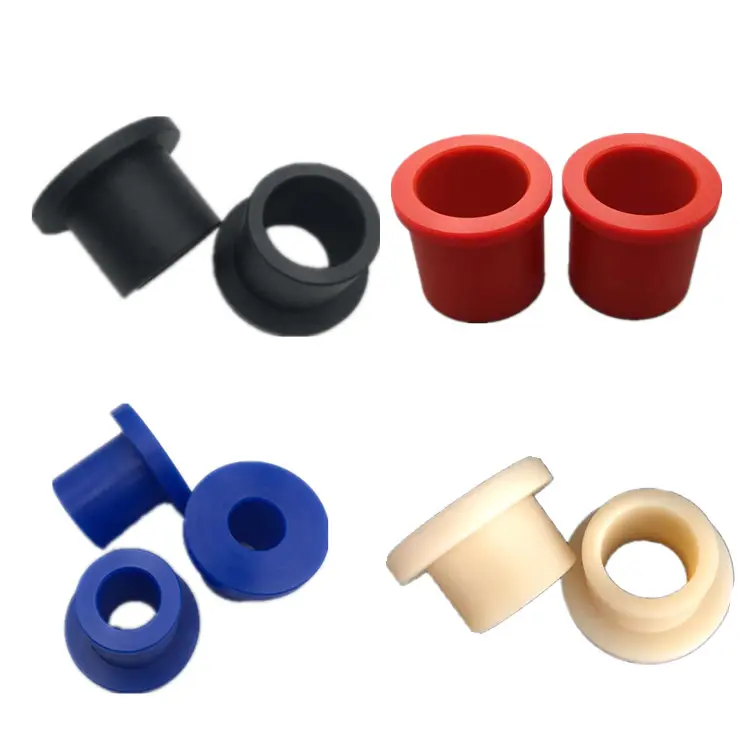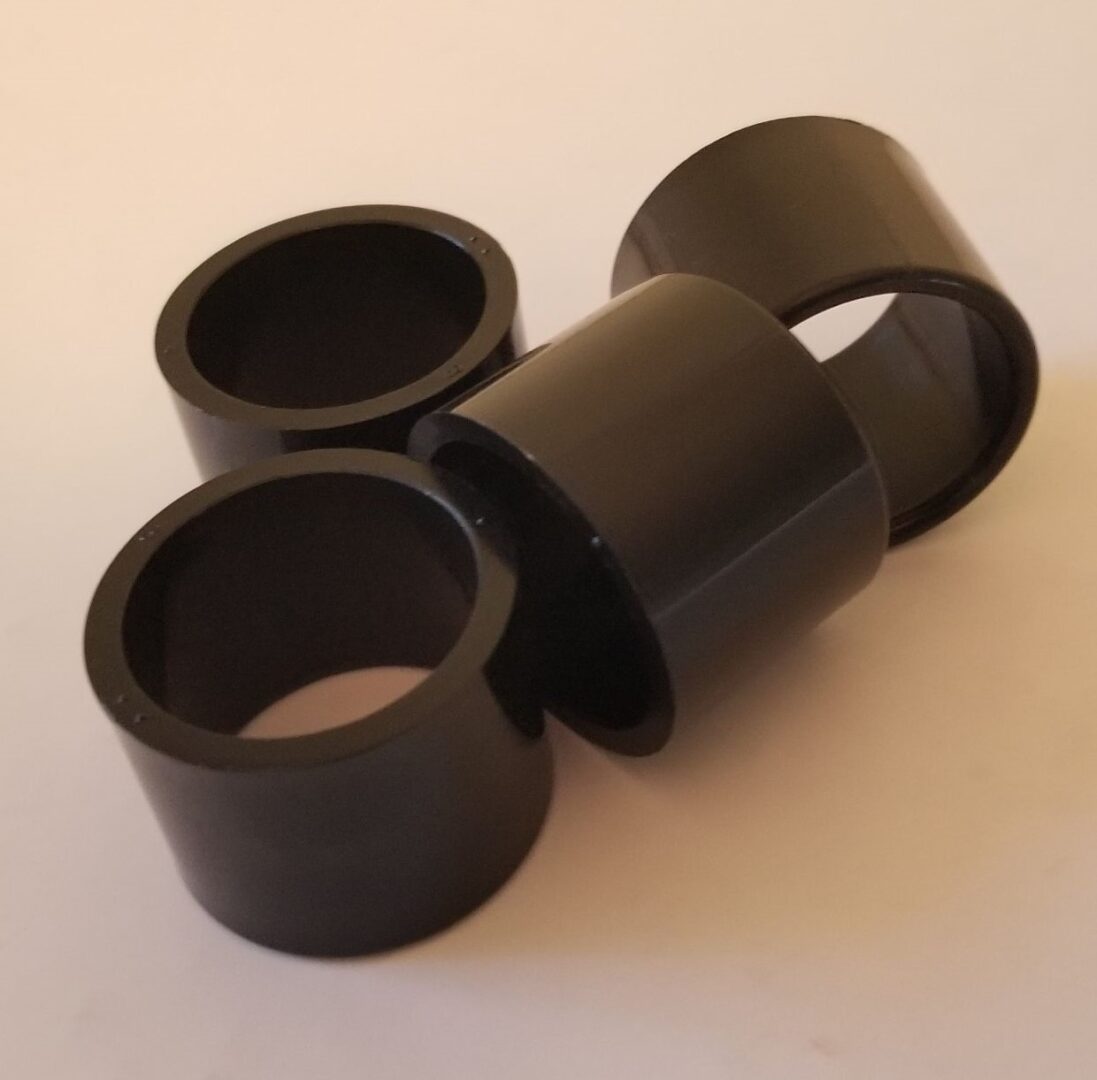
Can I find information on alternatives to plastic bushings for specific industrial applications?
If you are looking for information on alternatives to plastic bushings for specific industrial applications, there are several ways to find relevant information. Here’s a detailed explanation:
1. Research Online:
– Conduct a search on industrial websites, forums, and technical resources that focus on machinery, equipment, and industrial applications. Look for articles, whitepapers, or case studies that discuss alternative bushing materials or technologies.
– Explore manufacturer websites and product catalogs. Many manufacturers provide detailed information about their bushing products, including alternative materials they offer for specific applications.
– Check industry-specific publications or journals that cover topics related to machinery, equipment, or specific industrial sectors. These publications often feature articles or research papers discussing alternative bushing options and their suitability for various applications.
2. Consult with Industry Experts:
– Seek advice from industry professionals, engineers, or consultants who specialize in the specific industrial application you are interested in. They can provide insights based on their expertise and experience with alternative bushing materials.
– Attend industry conferences, trade shows, or seminars where you can network with experts and professionals in your field. Engage in discussions and ask questions about alternative bushing solutions for your specific application.
3. Contact Bushing Manufacturers:
– Reach out to manufacturers or suppliers of bushing products and inquire about alternative materials they offer. Many manufacturers have technical support teams who can provide guidance and recommendations based on your specific requirements.
– Share details about your application, such as operating conditions, load requirements, temperature range, and any specific performance criteria. This information will help manufacturers suggest suitable alternatives to plastic bushings.
4. Consider Other Bearing Types:
– In some cases, alternative bearing types may be suitable replacements for plastic bushings. Explore options like roller bearings, needle bearings, or sleeve bearings, depending on the specific application requirements.
– Each bearing type has its own advantages and limitations, so it’s important to consider factors such as load capacity, speed, lubrication requirements, and environmental conditions when evaluating alternative bearing options.
5. Evaluate Application-Specific Requirements:
– Consider the specific requirements of your industrial application when exploring alternatives to plastic bushings. Factors such as temperature range, chemical compatibility, load capacity, noise reduction, or self-lubrication can influence the suitability of different materials or bearing solutions.
– Take into account the overall performance, durability, and maintenance requirements of the alternative bushing options. Assess how they align with your application’s needs and any potential trade-offs involved.
By conducting online research, consulting with industry experts, contacting manufacturers, considering alternative bearing types, and evaluating application-specific requirements, you can gather valuable information on alternatives to plastic bushings for specific industrial applications. This will help you make informed decisions and select the most suitable bushing solutions for your specific needs.

Can I get guidance on selecting plastic bushings based on factors like load capacity, speed, and temperature?
Yes, you can obtain guidance on selecting plastic bushings based on factors such as load capacity, speed, and temperature. Considering these factors is crucial for choosing the appropriate plastic bushings that can withstand the specific operating conditions of your application. Here are some sources that can provide guidance on selecting plastic bushings:
- Manufacturer Documentation: Manufacturers of plastic bushings often provide technical documentation, catalogs, or product datasheets that include information on load capacity, speed limits, and temperature ratings. These resources typically outline the performance characteristics and specifications of different bushing materials and can guide you in selecting the most suitable bushings for your application. Visit the websites of reputable manufacturers or contact their customer support for access to these resources.
- Engineering Handbooks and Reference Guides: Engineering handbooks and reference guides related to mechanical design, tribology, or materials science can offer valuable guidance on selecting plastic bushings. These resources often provide formulas, charts, and guidelines for calculating load capacity, considering speed limitations, and understanding temperature effects on various materials. Look for industry-standard handbooks or reference guides that cover topics relevant to your application and consult the sections on bushing selection.
- Industry Associations and Standards Organizations: Industry associations and standards organizations in the machinery, automotive, or related sectors may have published guidelines or standards for selecting plastic bushings based on load capacity, speed, and temperature considerations. Visit their websites or contact them directly to inquire about any available resources or recommendations. These organizations often have technical committees and experts who can provide valuable guidance based on industry best practices.
- Consulting with Application Engineers: If you require more personalized guidance, consider consulting with application engineers or technical experts who have expertise in the field of bushing selection. Application engineers can assess your specific application requirements, including load capacity, speed, and temperature, and make recommendations based on their experience and knowledge. Reach out to plastic bushing manufacturers, suppliers, or engineering consulting firms to inquire about their consulting services.
- Online Forums and Communities: Participating in online forums and communities focused on machinery, engineering, or tribology can provide access to collective knowledge and experiences of professionals in the field. Engage in discussions, ask questions, and seek guidance on selecting plastic bushings based on load capacity, speed, and temperature requirements. Experienced members of these communities can often provide practical insights and recommendations.
When selecting plastic bushings, it’s important to consider not only the load capacity, speed, and temperature requirements but also factors such as the specific application environment, chemical compatibility, and maintenance considerations. It’s recommended to gather information from multiple sources and consult with experts to ensure the most suitable selection for your application.
By utilizing the available guidance and expertise, you can make informed decisions when selecting plastic bushings, considering factors such as load capacity, speed limits, and temperature requirements, thereby optimizing the performance and reliability of your machinery or equipment.

What are the key considerations when selecting plastic bushings for corrosive environments?
When selecting plastic bushings for corrosive environments, it’s essential to consider several key factors to ensure the longevity and performance of the bushings. Corrosive environments can pose significant challenges to materials, including degradation, chemical attack, and loss of mechanical properties. Here are the key considerations when selecting plastic bushings for corrosive environments:
- Chemical Compatibility: The first and foremost consideration is the chemical compatibility of the plastic material with the corrosive substances present in the environment. Different plastics have varying degrees of resistance to specific chemicals. It’s crucial to identify the types of corrosive chemicals, acids, bases, solvents, or other substances that the bushings will be exposed to and choose a plastic material that offers excellent resistance to those specific chemicals.
- Material Selection: Certain plastic materials are known for their superior chemical resistance properties. For corrosive environments, consider using plastic materials such as PTFE (Polytetrafluoroethylene), PVDF (Polyvinylidene Fluoride), PPS (Polyphenylene Sulfide), or ETFE (Ethylene Tetrafluoroethylene). These materials offer excellent resistance to a wide range of corrosive chemicals and can withstand harsh environments.
- Temperature Range: In addition to chemical compatibility, consider the temperature range of the corrosive environment. Some plastics may have temperature limitations and can degrade or lose their chemical resistance properties at elevated temperatures. Ensure that the selected plastic material can withstand the temperature range of the corrosive environment without compromising its performance or chemical resistance.
- Load and Wear Requirements: Evaluate the load and wear requirements of the application. Corrosive environments may involve abrasive particles or high loads that can accelerate wear and reduce the lifespan of the bushings. Select plastic materials that offer excellent wear resistance and can withstand the specific load conditions of the application.
- Sealing and Contamination: Corrosive environments often involve the presence of moisture, gases, or contaminants. Consider whether the bushings need to provide sealing properties to prevent ingress of corrosive substances or contamination. Some plastic bushings can be designed with additional sealing features to enhance protection against corrosive elements.
- UV and Weather Resistance: If the corrosive environment involves exposure to sunlight or outdoor weather conditions, consider the UV resistance and weatherability of the plastic material. Some plastics may degrade or experience color fading when exposed to prolonged sunlight or extreme weather conditions. Choose a plastic material that offers good UV resistance and weather resistance properties if applicable.
- Manufacturer Expertise: Work closely with manufacturers or suppliers who have expertise in providing plastic bushings for corrosive environments. They can offer guidance on material selection, design considerations, and provide specific recommendations based on their experience and knowledge of different plastic materials and their performance in corrosive environments.
It’s important to thoroughly assess the corrosive environment and consult with experts to ensure the right plastic material is selected for the bushings. Conduct compatibility tests, review material datasheets, and consider real-world application experiences to make an informed decision. Additionally, proper installation, regular inspection, and maintenance practices should be followed to maximize the performance and lifespan of the plastic bushings in corrosive environments.
By considering these key factors, you can select plastic bushings that are well-suited for corrosive environments, providing reliable and long-lasting performance even in the presence of corrosive substances.


editor by CX 2024-05-02